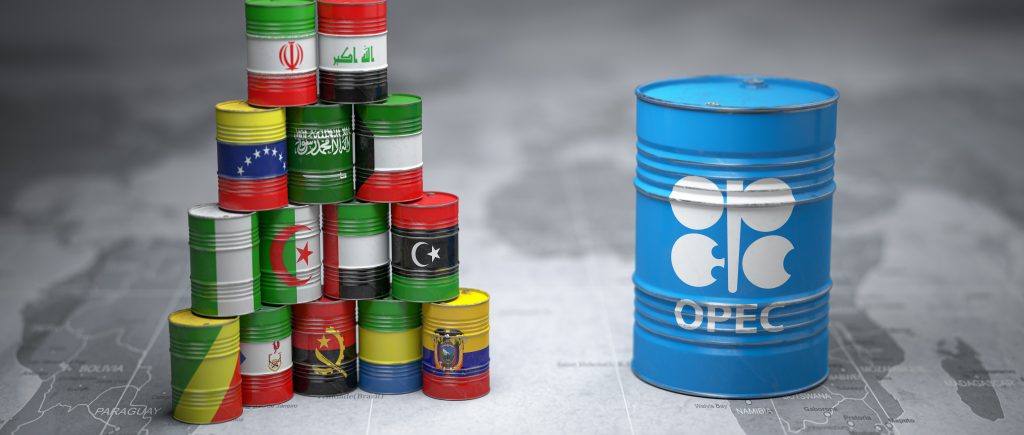The latest decision by OPEC+ Tuesday to stick to its planned increase in oil output for February largely reflects easing concern of a big surplus in the first quarter of 2022, as well as a wish to provide consistent guidance to the market.
The producer group, which comprises of the Organization of the Petroleum Exporting Countries with allies including Russia, agreed on Tuesday to raise its output target by 400,000 barrels per day (bpd) in February.
The United States has urged the group to pump more crude to help the global economic recovery from the pandemic and cool fuel prices as they trade around $80 a barrel. But OPEC+ has said the market did not require extra oil.
During their talks, ministers and officials considered internal OPEC+ data ahead of Tuesday’s meeting, which points to a supply surplus of 800,000 bpd in January and 1.3 million bpd in February.
While still a surplus, this is much less than initially feared. In December, OPEC+ internal figures had put January’s surplus at 2 million bpd, increasing to 3 million bpd in February, making it riskier to add more supply.
The picture has improved since the previous one was taken,” said an OPEC+ delegate, referring to the first quarter market outlook. “Stocks are down.”
Other OPEC+ delegates said the revisions partly stem from OPEC+’s view that the Omicron coronavirus variant will have a low impact on demand and also that the inability of some producers to boost output due to capacity constraints will keep actual supply additions low.
Investors appear to agree on Omicron’s mild impact. Oil prices have climbed to $80 a barrel, almost back to level they were at on Nov. 26 when reports of the new variant first appeared, sparking a more than 10% decline in prices on that day.
Oil prices rose 1.5% on Tuesday following the decision of OPEC+ based on indications that the Omicron coronavirus variant would have only a mild impact on demand.
Brent crude was up $1.15 , or 1.5%, at $80.13 a barrel, its highest since November, and US West Texas Intermediate crude rose $1 cents, or 1.31%, to $77.09.
The oil market is bullish today as a result of optimism sourced from today’s monthly OPEC+ meeting, which is helping oil prices trade higher.
It appears that the market is making the bet that Omicron is the beginning of the end of COVID-19, Britain’s vaccine minister said people being hospitalized with COVID-19 in the United Kingdom were generally showing less severe symptoms than previously. French Finance Minister Bruno Le Maire said that while some sectors were being disrupted by the surge of the fast-spreading Omicron variant.
Global manufacturing activity remained strong in December, suggesting Omicron’s impact on output had been subdued.
However, analysts warned OPEC+ may have to change track if tension between the West and Russia over Ukraine flares up and hits fuel supplies, or if Iran’s nuclear talks with major powers make progress, which would lead to an end to oil sanctions on Tehran. Two events represent major wildcards that could quickly alter the price trajectory and test OPEC’s rapid response mechanism.
Libyan output is likely to be about 500-600,000 bpd lower in the coming weeks, more than offseting the planned monthly increase in OPEC+ production. Libya’s state oil firm said on Saturday oil output would be reduced by 200,000 bpd for a week due to maintenance on a main pipeline, adding to disruptions two weeks ago after militia blocked operations at the Sharara and Wafa oilfields.
As OPEC+ continues to raise production in the coming months and demand growth normalizes, oil prices could come under downward pressure. Both benchmarks saw some volatility in trading earlier in the day after Minneapolis Federal Reserve Bank President Neel Kashkari said he expects the US central bank to need to raise interest rates two times this year, reversing his long-held view that rates will need to stay at zero until at least 2024.
European fuel prices also soared more than 30% on Tuesday after low supplies from Russia reignited concerns about an energy crunch as colder weather approaches. Higher prices for the fuel boosts oil demand as utilities switch to burning crude, rather than natural gas.

 Noor Trends News, Technical Analysis, Educational Tools and Recommendations
Noor Trends News, Technical Analysis, Educational Tools and Recommendations




